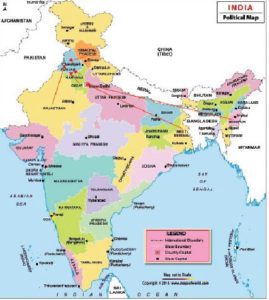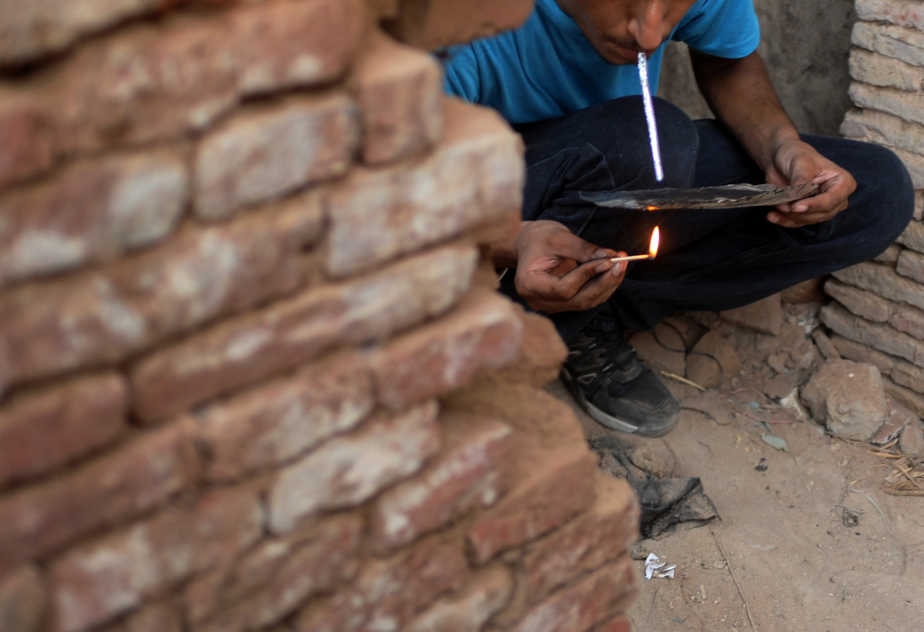A curious set of circumstances have made Delhi a transit point for drugs, as Amarinder Singh suggests and Delhi Police is unable to deny
Tougher policing of Punjab’s border, with several checkpoints, is helping the state assuage its people’s fears, making them believe that the fight against drugs is being won. However, there’s another threat which is not in the state’s hands, says Punjab CM Amarinder Singh: It’s the capital — Delhi.
A source from the Narcotics Control Bureau told Patriot that low-quality heroin and pharmaceutical drugs were being smuggled into Punjab from Delhi. With the price of heroin shooting up from R5,000 per kg, to a hefty R20,000, according to the official, pharmaceutical drugs are now becoming popular.
Most of these drugs, he says, come from Malda in West Bengal, and Manipur, end up in Delhi and then make its way to Punjab.
This information finds some truth in the letter which the Punjab CM wrote to Union Home Minister Rajnath Singh. In the letter dated July 19, he said the “available information” indicates that drug peddlers and smugglers have disappeared from his state, instead “hiding in the neighbouring State”. He pointed to Haryana, Himachal Pradesh, Rajasthan and Delhi, asking Rajnath Singh to intervene in the matter of Delhi, which is “fast becoming a safe heaven (sic) for drug paddlers (sic) and smugglers”.
Maybe the letter was a defensive manouevre, trying to deflect the blame from lying squarely on his government after the month of June saw 23 deaths from overdose in Punjab, according to a news report. But, significantly, a Delhi Police officer did admit to Patriot that with Punjab’s international border becoming tougher to breach, smugglers are finding new routes. And that is why Delhi is increasingly becoming a transit point.
Taking a step further, the CM suggested on July 24 a shorter tenure for Border Security Force personnel at the border “to break their alleged nexus with drug smugglers”. This statement, which is likely to cause some fury, was made while reviewing the government’s anti-drug campaign with senior administrative and police officials to review the government’s anti-drug campaign.
BSF had earlier been lauded for its efforts in plugging the holes along the border with Pakistan to curb smuggling.
What kind of high
A 2015 Punjab Survey of Opioid Dependence found 90% addicts were of heroin. The same year, a study commissioned by the Ministry of Social Justice and Empowerment (MoSJE) found on an average R1,400 was spent on heroin by drug addicts every day in Punjab. Opium users spent R340 per day and pharmaceutical opioid users spent R265 per day.
Just four weeks after the Punjab CM created the Special Task Force (STF) on March 29 to counter the drug menace, it was reported that the team caught 1,468 users. As many as 1,277 cases were registered under the Narcotic Drugs and Psychotropic Substances Act.
In April, STF’s ADGP Harpreet Singh remarked that his team had successfully choked off trans-border and interstate supply lines. By June, following the huge number of overdose related deaths, he was blaming it on “street-level peddling”, adding that they had recently busted a gang which was supplying adulterated heroin called ‘cut’ procured from Africans in Delhi.
In 2017, 191 kg of heroin was seized in Punjab, while in 2018, 210 kg had been seized in the six months of the year till June.
As per the seizure data India provided to UNODC for the year 2016, 95% of the opium appears to have originated in India. The rest came from Nepal (5%) and from Afghanistan (0.15%). Most of the opium was for the Indian market (99.2%); the rest was for Canada (0.8%).
A new triangle
The last three months have seen a significant number of drugs seizures in Manipur. April saw the arrest of a man who also outed a former DSP of being part of the ring. In that bust 100,000 WY (World is Yours, a new brand of psychotropic drug) tablets worth R40 lakh were found. In May, the same drug was busted, worth R17 lakh. And in June four kg of heroin and 2.80lakh tablets of party drugs were recovered, with a value of R40 crore, that too from the home of a BJP leader.
Another major haul the same month saw the seizure of 4.595 kg of contraband heroin and 2.80 lakh WY tablets worth more than R27.79 crore. Along with this,Indian currency totalling R57.18 lakh, including R95,000 in old currency notes, was also seized.
The NCB official said that the Golden Triangle of Thailand, Laos and Myanmar has undergone a change. “Thailand claims that after 2009 they have cut down on cultivation of opium”, so now the third member is increasingly becoming Manipur, he says. That’s because of the porous border Manipur shares with Myanmar, which leads to increasing drug use and trade.
In the last century, opium was traditionally grown for personal consumption. Now, with supply from Afghanistan via Pakistan falling short due to stricter border control, Manipur seems to have stepped in to fill the vacuum.

What Delhi does
Both our sources said that the most widely used drugs in Delhi are the milder herbs cannabis and charas. This is because of their easy availability and cheap rate compared to other drugs.
But the people of Delhi, according to them also love their cocaine. A man who frequents Delhi’s upper crust parties told Patriot that the rich man’s drug is everywhere. “You just have to enter the washroom of the venue and you’ll find white residue left behind by the users”, he quips. This, the NCB official claims, makes heroin a drug that mostly comes to Delhi intransit. Either it’s making its way out of the country or being taken to other parts of the country.
The data (see box) also presents an important risk of pharma drugs which are fast becoming the number one choice for addicts. NCB official says that with the chain of distribution being very complex, killing the trade is difficult.
Pharma drugs, he says are widely abused, and their control is “a challenge”. He ponders that no drug should be available over the counter, but with very few primary health centres, especially in rural areas, getting a doctor’s prescription each time is not a practical solution.
The complexity is not just an excuse, as smuggling fuels other illegal activities, and addiction destroys lives. Governments must work together to have a workable framework, instead of indulging in a blame game.





